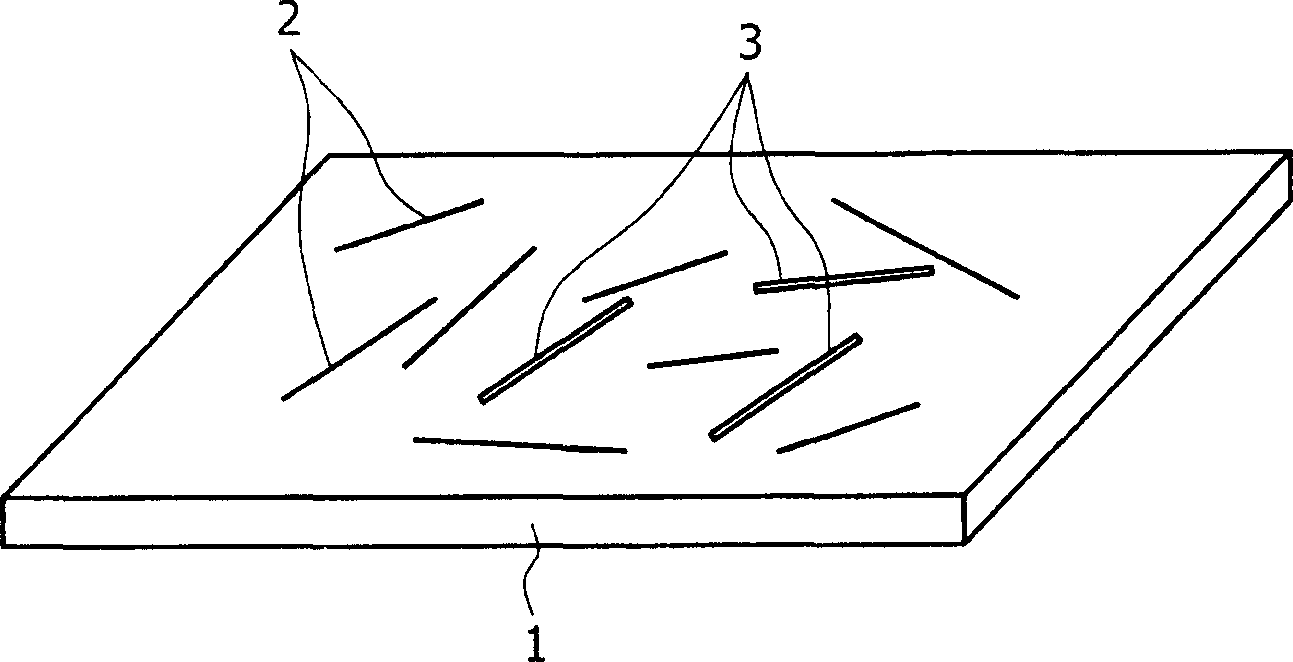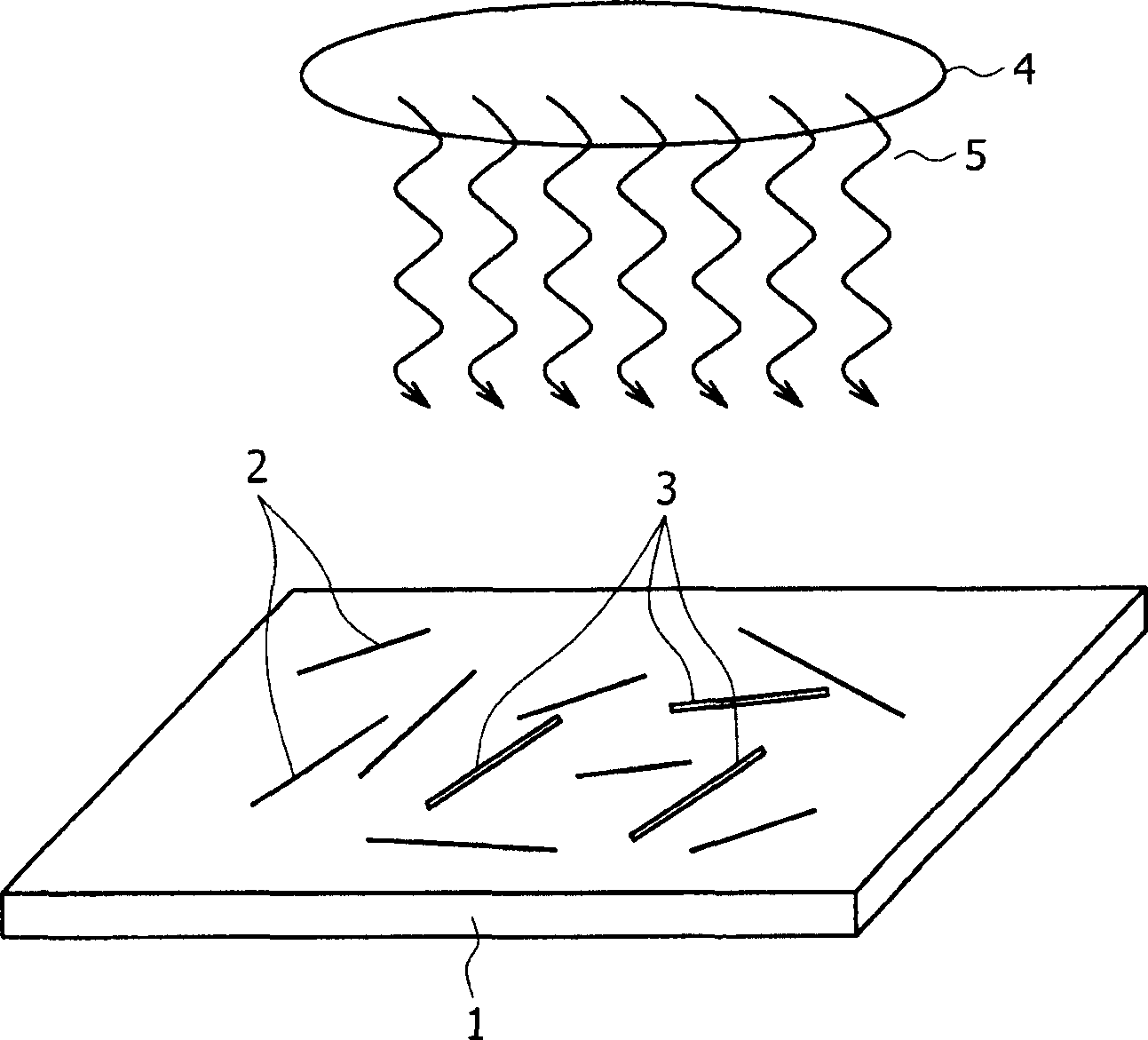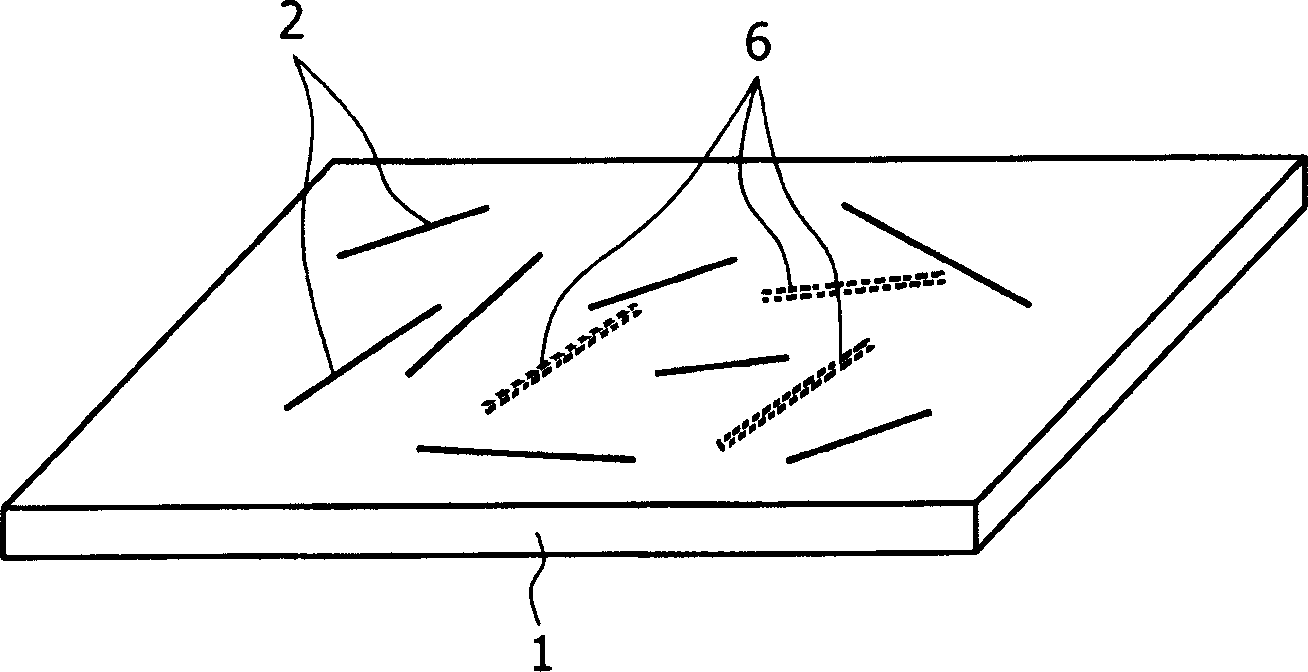Aggregation for manufacturing carbon nanometer tube and thin film, electronic component and method for destroying carbon nanometer tube and carbon nanometer tube selective reaction
A technology for carbon nanotubes and electronic components, which is applied in the fields of manufacturing carbon nanotube aggregates and thin films, electronic components, destroying carbon nanotubes and the selective reaction of carbon nanotubes, and can solve the problem of low device efficiency and burning semiconductor carbon. problems with nanotubes
- Summary
- Abstract
- Description
- Claims
- Application Information
AI Technical Summary
Problems solved by technology
Method used
Image
Examples
example 1
[0122] With a wavelength of 514nm and a power density of 3mW / μm 2 Single-walled carbon nanotubes (commercially available under the trade name SweNT from Southwest Nanotechnologies) were examined by laser irradiation. Figure 10 The obtained Raman spectrum in the RBM (radial breathing mode) region is shown. Due to the third van Hove electronic transition S of semiconducting carbon nanotubes 33 , a laser with the specified energy produces a -1 Raman signal of , and due to the first van Hove electronic transition of metallic carbon nanotubes M 11 , resulting in a 230-300cm -1 Raman signal. For 1590cm -1 The nearby G-mode peaks normalize these Raman spectra. Note that laser irradiation causes the signal from the metallic CNTs to decrease drastically in intensity, while the signal from the semiconducting CNTs remains almost unchanged. Specifically, 80 minutes of irradiation resulted in approximately 85% reduction in intensity of the signal from the metallic carbon nanotubes....
example 2
[0125] In Example 1, note that metallic carbon nanotubes (with smaller diameters) and semiconductive carbon nanotubes (with larger diameters) will bring changes to the Raman spectrum in the RBM region once irradiated with laser light at a wavelength of 514 nm . Some might point out that since carbon nanotubes with smaller diameters are generally more sensitive to laser irradiation, the change in the Raman spectrum is related to the tube size. However, the inventors believe that the illumination effect is determined by the tube type (metallic or semiconductive) rather than the tube size. To prove this point, the inventors irradiated with a laser with a wavelength of 632.8 nm to detect metallic carbon nanotubes (with larger diameter) and semiconductive carbon nanotubes (with smaller diameter) in the RBM region.
[0126] With a wavelength of 632.8nm and a power density of 1mW / μm 2 Laser irradiation inspection of commercial single-walled carbon nanotubes (HiPco). Figure 12 The...
PUM
| Property | Measurement | Unit |
|---|---|---|
| Wavelength | aaaaa | aaaaa |
| Diameter | aaaaa | aaaaa |
| Diameter | aaaaa | aaaaa |
Abstract
Description
Claims
Application Information
 Login to View More
Login to View More - R&D
- Intellectual Property
- Life Sciences
- Materials
- Tech Scout
- Unparalleled Data Quality
- Higher Quality Content
- 60% Fewer Hallucinations
Browse by: Latest US Patents, China's latest patents, Technical Efficacy Thesaurus, Application Domain, Technology Topic, Popular Technical Reports.
© 2025 PatSnap. All rights reserved.Legal|Privacy policy|Modern Slavery Act Transparency Statement|Sitemap|About US| Contact US: help@patsnap.com



